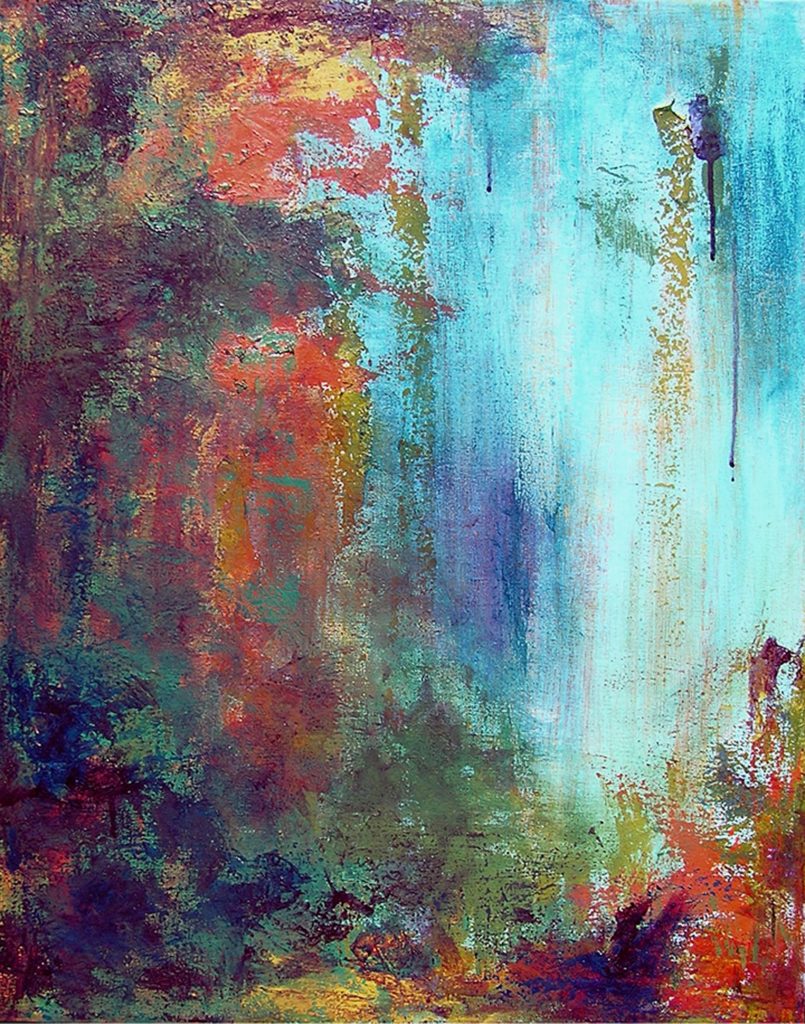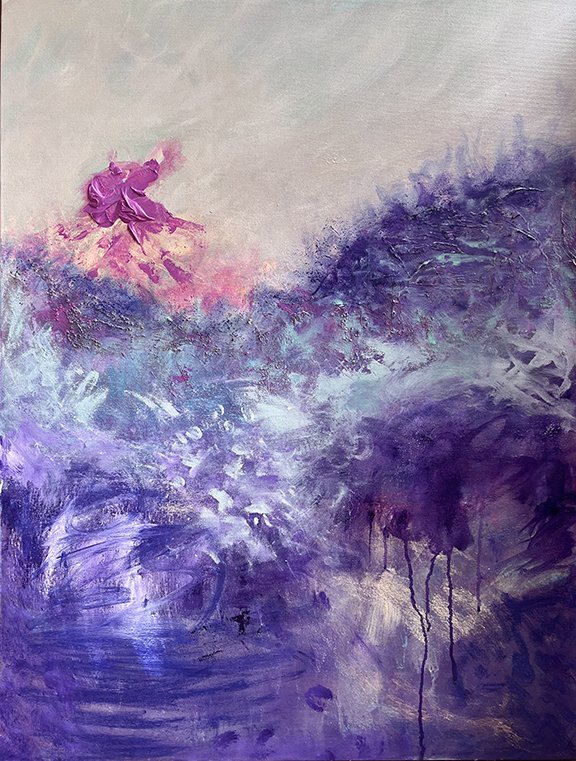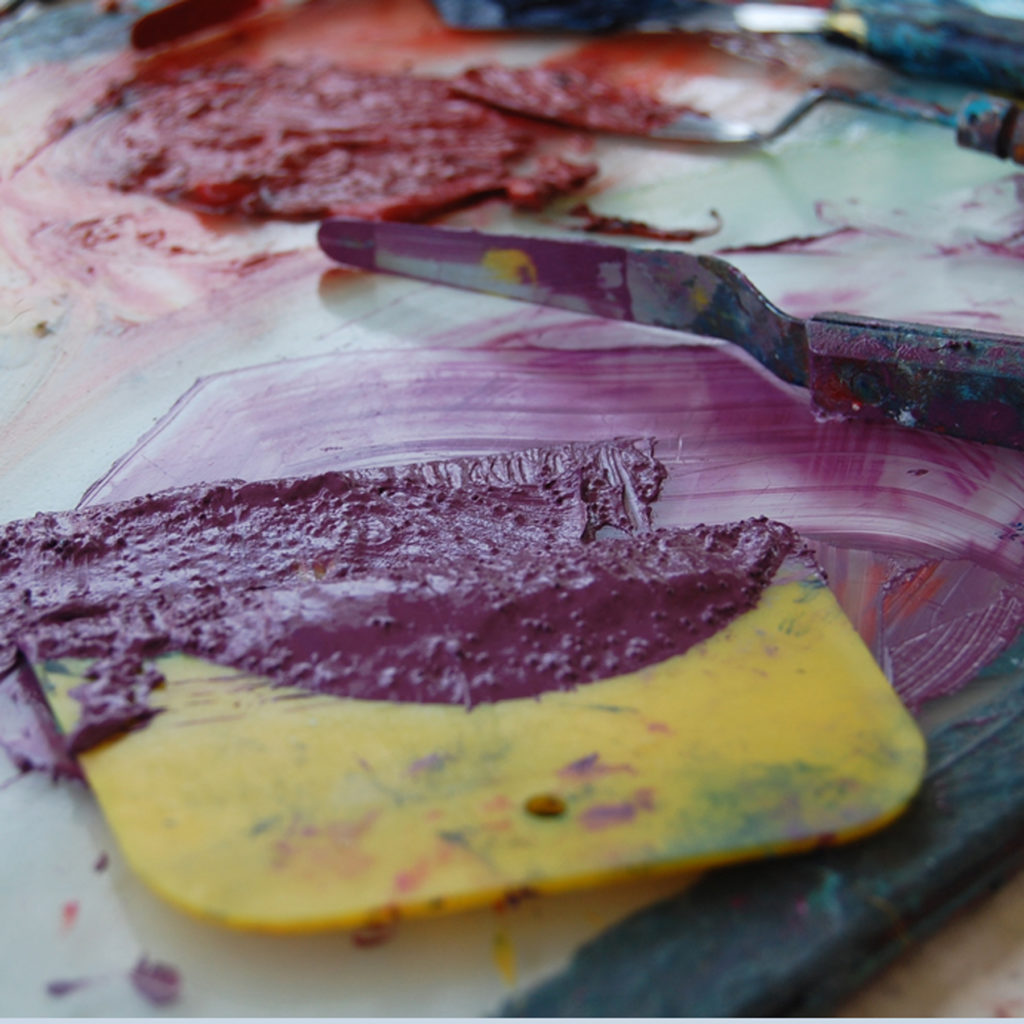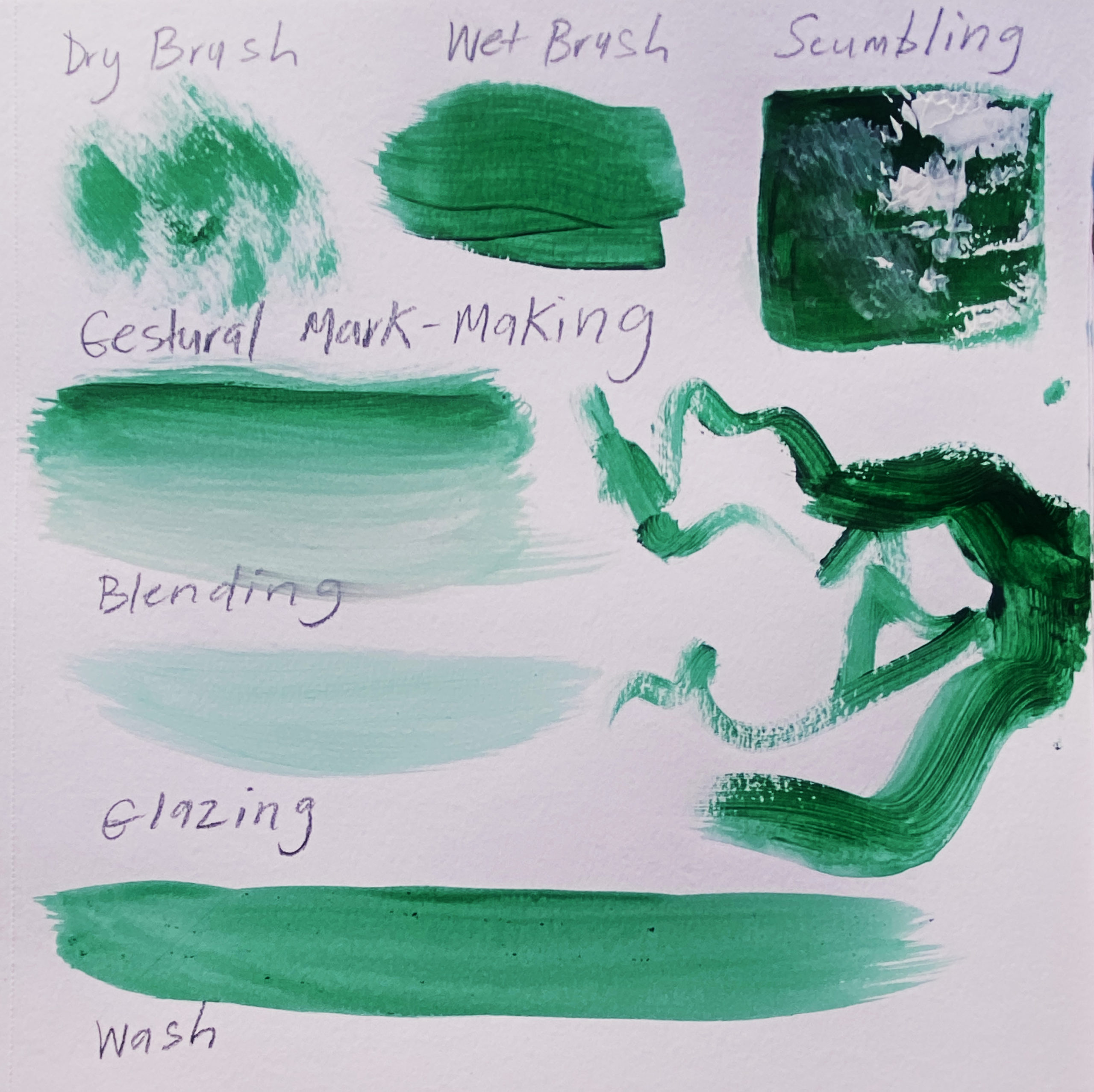Beginner’s Guide to Acrylic Painting Techniques
If you are looking to take your acrylic painting skills to the next level, then look no further! This guide will teach you all the essential techniques from brush strokes and layering of colors, to blending and dry-brushing. With these acrylic painting techniques, you will be able create beautiful masterpieces in no time. To use these techniques, you will need a brush, palette knife, surface to paint on, and a bucket of water for clean up.

Wet-on-Wet Technique
This acrylic technique involves applying wet paint onto wet paint or a wet surface. It creates a soft, blended look that is great for creating backgrounds or adding a sense of depth to your painting. Wet-on-wet can also create dripping effects that add movement to your piece.
Dry Brush Technique
Dry brushing is one of the fundamental painting techniques all acrylic painters should master. This technique involves taking a dry, hard bristle brush that has been lightly loaded with paint, and moving it across the canvas in quick, short strokes. This is commonly used to add texture and depth to a painting, such as creating stones on mountains or the coarse fur of an animal. It is particularly effective if you already have a layer of dark paint on the canvas, and then dry brush on a lighter color.
Scumbling
This acrylic painting technique involves scrubbing an undiluted, opaque, and generally pale pigment across darker colors for special textural effects. You can create this effect with a hard bristle brush or a palette knife. Scumbling works particularly well when trying to add highlights to an area of your painting, and can become a beautiful focal point in your piece.
Layering
One of the most important aspects of acrylic painting is to take advantage of the ability to layer colors to create a sense of depth and richness in your painting. When layering, start with a pale shade or close to white for background, then gradually move towards darker shades. Each new layer should be dry before adding next layer, as this will ensure your painting has a seamless look and feel. Multiple layers add complexity and sophistication to your paintings, so always try to incorporate many layers into your piece.
Glazing
This technique involves using a transparent or semi-transparent color over a previously painted layer to create a sense of depth and richness in your painting. To create the transparent or semi-transparent layer, you can use water, Golden’s Acrylic Glazing Liquid or Novacolor’s Gloss Medium and Varnish. I prefer using a medium because it protects the paint more than water and gives a satin or gloss sheen. When building up layers or glazes, be sure to allow paint to dry completely between each coat for full effect.
Blending
Acrylics have great blending capabilities, allowing you to make subtle color transitions that enhance the beauty of your artwork. You can achieve blending by applying two or more different paint colors onto your canvas and mixing them together. To make soft and uniform gradients, use a soft round brush and move it back and forth between the two different paint colors you want to blend. Build up the layers gradually for a soft blend without leaving any abrupt edges or streaks. Keep in mind that acrylic stays wet for about 10-20 minutes, so be sure to blend colors together relatively quickly.
Wash
A wash is when you water down your paint by approximately 25%–75% and paint onto the surface. The result you will get is semi-transparent paint that reveals the underlying layer. The more water you add to the paint, the more transparent the layer will be. This is a good technique to use if you want a transparent layer, but don’t have glazing medium to create the translucency.

Gestural Lines
Gesture lines add engaging details and contrast to your painting. Use wet paint and a wet brush to create gestural lines. Draw the lines quickly to create variety and a sense of movement. You can also use charcoal sticks or other drawing tools to create gesture lines in your painting.

Impasto Technique

This technique involves using thick paint to create texture and dimension in your painting. It is great for creating the illusion of three-dimensional objects or adding texture to your painting. Use a thick gel medium such as Golden’s Extra Heavy Acrylic Gel Medium or Novacolor’s Nova Super Gel to thicken your paint and accentuate the 3-d effect. If you like the Impasto technique, check out the work of William Thiebaud who was creating thick, textural paintings of cakes in the 1950s and 1960s.
Sgraffito
This technique involves scratching through a layer of paint to reveal the layers underneath. It is great for adding texture and detail to your painting. To create this effect, you can use the point of a palette knife or the end of a paintbrush, and be sure the paint you are scratching through is wet.
Splatter Painting Technique
This technique involves flicking paint onto your canvas to create a random pattern. To create this effect, dip the tip of your brush into paint and flick it onto the canvas using a downward motion. You can experiment with watering down your paint a bit, and adding more or less pressure to create larger or smaller flecks of paint on your piece. Splatter painting is great for adding a sense of movement or chaos to your painting. The most famous artist to have used the splatter technique was Jackson Pollock.
Pouring Technique
This technique involves pouring paint onto your canvas and letting it flow and mix together. It is great for creating abstract and fluid paintings. Most artists use a pouring medium such as Liquitex’s Pouring Medium. Some artists use Floetrol, but it’s not archival, so I would advise against that. With this technique, consider limiting your paint colors to no more than three or four so that the colors don’t get muddy.
Conclusion
These are just a few acrylic painting techniques that you can try out to create different effects and textures in your paintings. While most of these techniques require a brush, you might experiment with other tools you could use to create unique effects. Regardless, experiment so you can discover what techniques work best for you and your artistic style.
ABOUT ANDREA CERMANSKI
I am an artist out of Santa Fe, New Mexico who has been painting for almost 30 years. I love to teach first-timers as well as experienced painters who need a creative reboot. My work has been displayed in several galleries around the country, and I have a Bachelor’s in Art History, a Master’s in Art Education, and had my work in a show juried by Judy Chicago. The idea of getting more people painting makes me light up as I want to inspire more people to express their creative selves and tap into a place of joy and calm.
WANT TO LEARN MORE?
- Subscribe and get one of the FREEBIES below!
- PDF explaining How to Use My 5 Favorite Mediums
- 8 Colors Every Artist Should Have: My list of BEST colors to buy and pro mixing tips
- Break Free and Breathe: Type-A Guide to Artistic Play. Powerful exercises to loosen you up to create better abstracts.
- Check out My Online Abstract Painting Course
- Read More Painting Tips Blog Posts
- Check out My Paintings & Art Prints for Sale
- Follow Me On YouTube, Instagram, or Pinterest

I am thrilled to find this website to enhance my abstract painting skills. I was reading artist Andrea’s FAVORITE TOOLS, BRUSHES, ETC.
Suddenly, the information disappeared! I have spent an hour looking for this information…again. Please provide direction to relocate these valuable resources to enhance my beginning abstract skills. Yes, I have signed up for online class via Santa Fe. I want to absorb everything-techniques, tools, paints, brushes- simply absorb everything,?
THANK YOU in advance for assisting my relocating this information.
Respectfully,
Judy Tomchey
jtomchey@gmail.com
Hi Judy, So sorry that happened! Here’s a link to that blog post. https://santafepaintingworkshops.com/painting-tool-guide/